‘The risk for a museum with this kind of beautiful architecture, which has a very strong narrative in the permanent galleries, is that it’s a one-of-a-kind experience.’ Manuel Rabaté, the director of the Louvre Abu Dhabi, is grabbing a few minutes between the public hoopla expected on the day of an exhibition opening and the private demands of whatever he has planned for his daughter’s birthday later on. In between sips of a coffee he seems unlikely to finish, he explains the course the museum is on now that the great expectations of the grand opening, largely fulfilled, are now past and the Louvre Abu Dhabi is into its third year of programming.
The show that has just opened when I visit in February is a reminder that, although the ‘Louvre’ is the headliner in the museum’s title, the institution is the result of an agreement between the government of the United Arab Emirates and the French state in the form of a consortium of 13 cultural institutions. ‘Furusiyya: The Art of Chivalry between East and West’ is a chance for the Musée de Cluny in Paris to shine. The show is curated by Elisabeth Taburet-Delahaye, former director of the Cluny, with that museum’s chief curator Michel Huynh and Carine Juvin, a specialist in Islamic art from the Louvre. And the majority of the exhibits are naturally from the Cluny, which is generally less crowded than it deserves to be, given that it has one of the best collections of medieval art in the world.
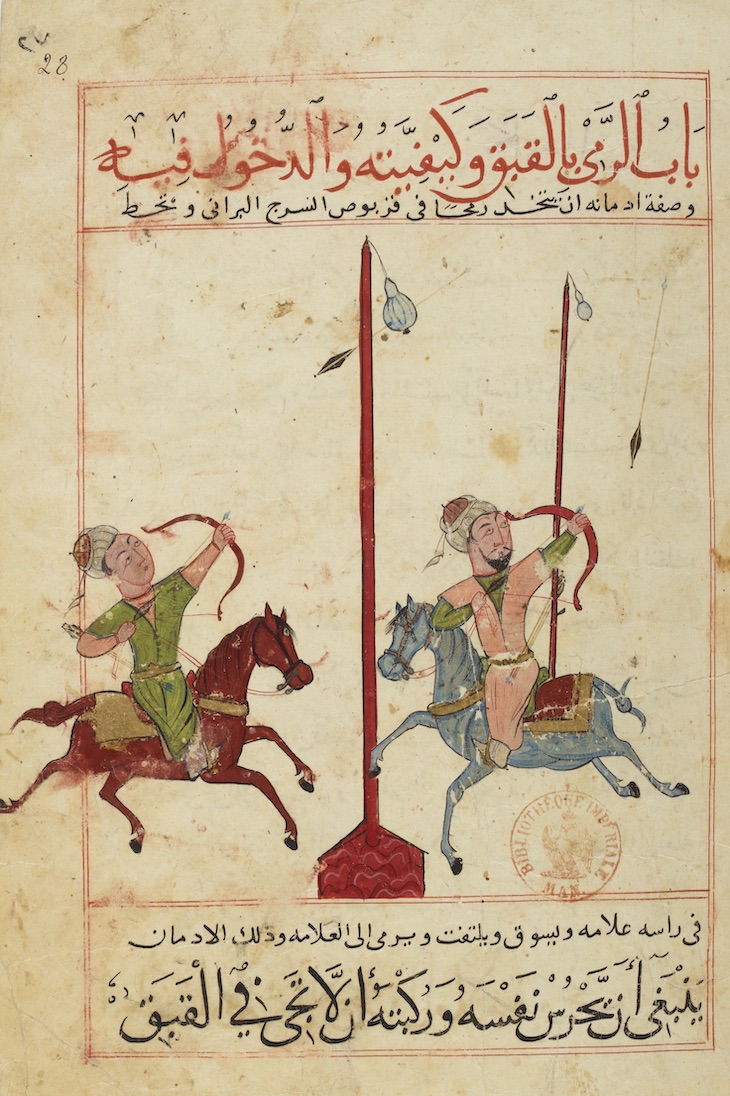
Page from Kitab al-makhzun jami al-funun (‘Treasury of the Various Arts’; 1470), Egypt. Bibliothèque nationale de France, Paris. Photo: © Bibliothèque nationale de France
Covering a period from the 10th to the 16th centuries, the show presents objects from medieval Europe (represented in the main by France), and the Arabic-speaking world (with an emphasis on the Mamluk sultanate covering Syria and Egypt). And it is the objects that lead the exhibition. Apart from a timeline as you enter the galleries, the wall texts concentrate on the formal qualities and the practical uses of the artefacts; a lesson in international politics is not to be had here. The exhibition deliberately skips over conflicts or conquests and has something of a ‘Don’t mention the Crusades’ air about it (although the catalogue does have a chapter on the subject). When I ask Manuel Rabaté if a show devoted to chivalry is slightly euphemistic about the militaristic purposes from which knightly culture sprang, he says: ‘Anthropologically, you have two civilisations which are influencing each other, fighting each other, sometimes living together, but in the creation [of the exhibition] we also find very strong commonalities.’ Elisabeth Taburet-Delahaye explains that she had the idea for a comparative show like this a long time ago, originally hoping that it might have an East Asian component, too. Furusiyya, an Arabic term for horsemanship, extends to all aspects of looking after a horse, not just equestrian skill, but doesn’t come with the codes of conduct chivalry was saddled with.
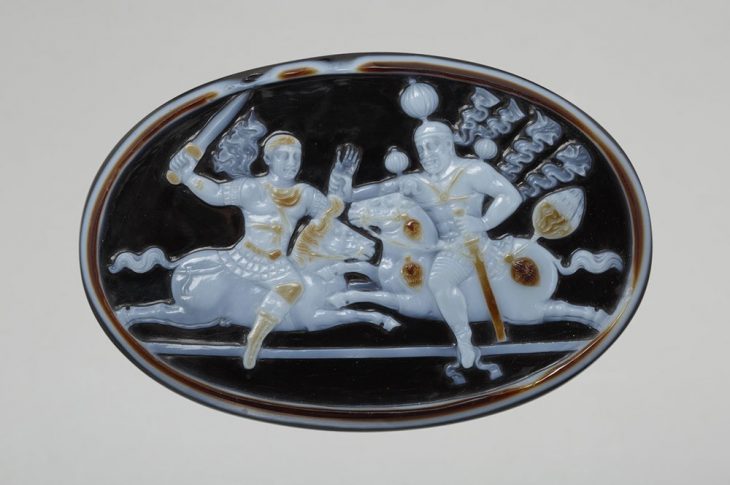
Cameo of Shapur and Valerian (after 260), Iran. Photo: © Bibliothèque nationale de France, Paris
Divided into sections called ‘Riding’, ‘Fighting’ and ‘Living as a Knight’, the exhibition turns its anthropological, comparative intentions into dramatic spectacle from the off. In the first room are two assemblages of riders and horses and their respective armour; the first equestrian is Italian and from the early 16th century, with his horse’s equipment hailing from Spain (or Flanders), plus a German chamfron; the second a Turkish assemble from the 16th or 17th century. After this visual stunt in which the riders – stuffed suits of armour mounted on their stylised horses – hover above the crowd, things become more connoisseurial. A highly detailed Iranian cameo dating to sometime after 260 depicts the globe-helmeted Persian ruler Shapur I capturing the Roman emperor Valerian – literally grabbing him by the wrist, as they face each other on horseback. There are traces of wit, too. In the ‘Fighting’ section, a pairing of Western European chainmail with an Ottoman helmet, damascened with silver, is bookended by a walnut-wood sculpture of Saint George slaying a dragon – ever so gently, as if out punting – and a lime-wood St Florian, who is dousing the fires of a model castle from above in languid fashion.
Treatises on riding, hawking, and combat add another visual dimension to the show, which includes a 15th-century guide to the art of war from Egypt, now in the Bibliothèque nationale in Paris and a guide to combat from Germany. The catalogue reminds us of the advice of Hanko Döbringer, a renowned medieval fencing master: ‘Note, that it is not possible to teach the art of fencing as well with words as with the hand.’ These manuscripts – like so many of the objects in the show – are not illustrated how-to guides, meant for practical use, but luxury items that were meant to be admired from the first.
From the April 2020 issue of Apollo. Preview and subscribe here.
Unlimited access from just $16 every 3 months
Subscribe to get unlimited and exclusive access to the top art stories, interviews and exhibition reviews.


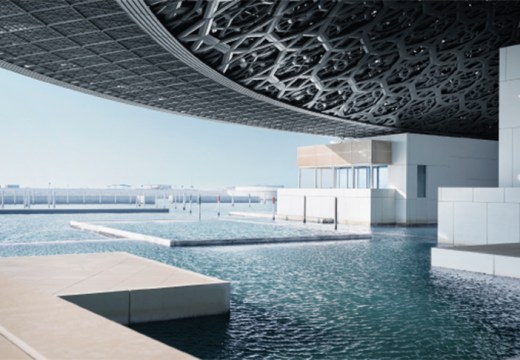
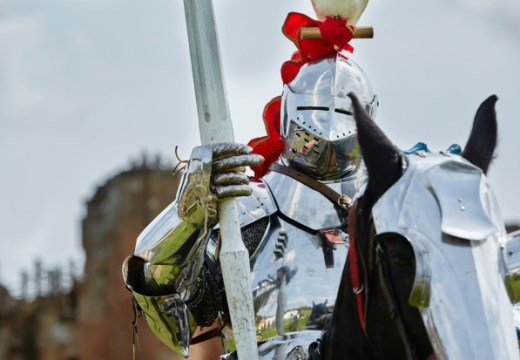
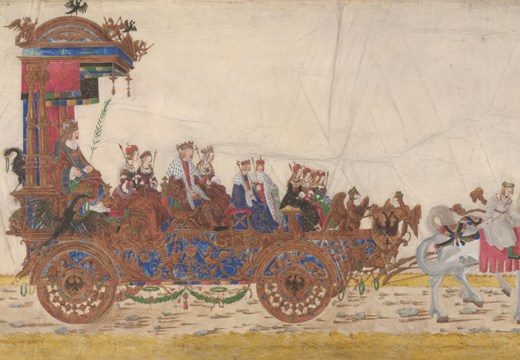









![Masterpiece [Re]discovery 2022. Photo: Ben Fisher Photography, courtesy of Masterpiece London](http://www.apollo-magazine.com/wp-content/uploads/2022/07/MPL2022_4263.jpg)
It’s time for the government of London to return to its rightful home